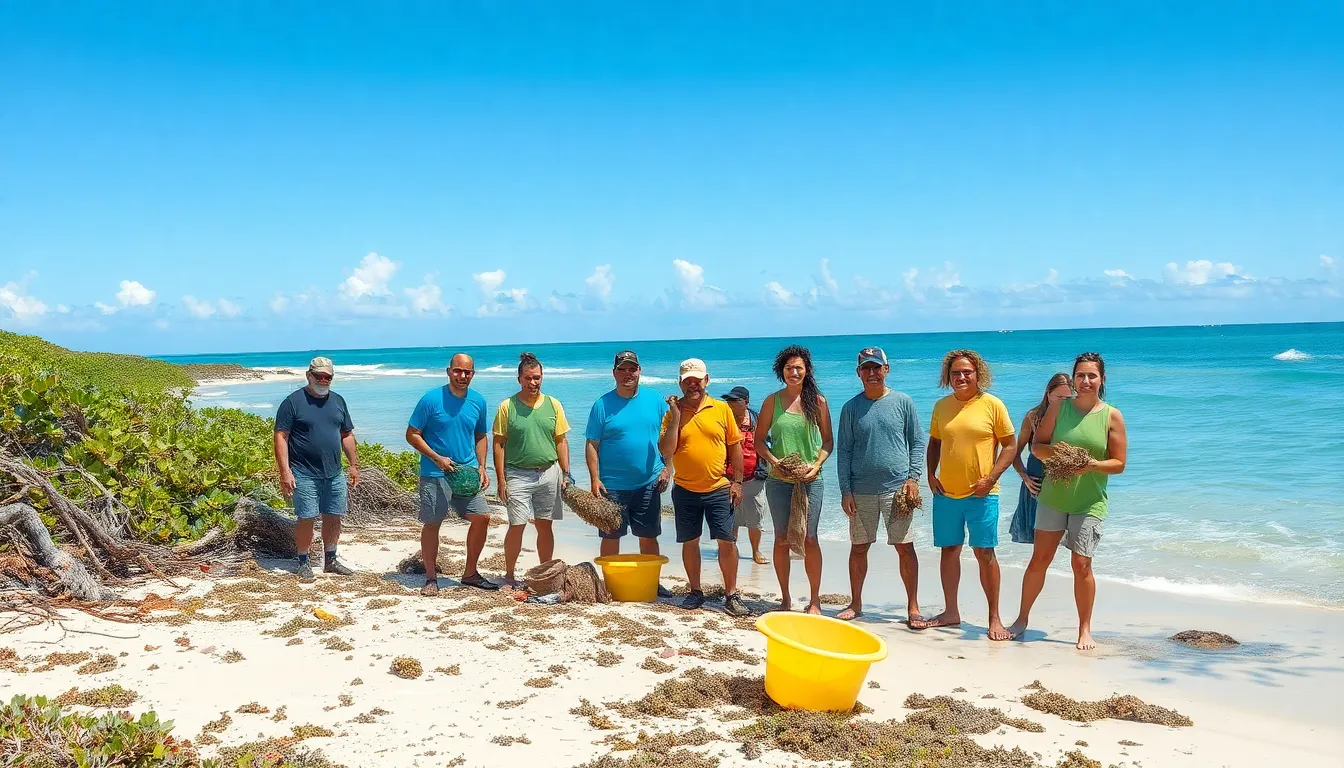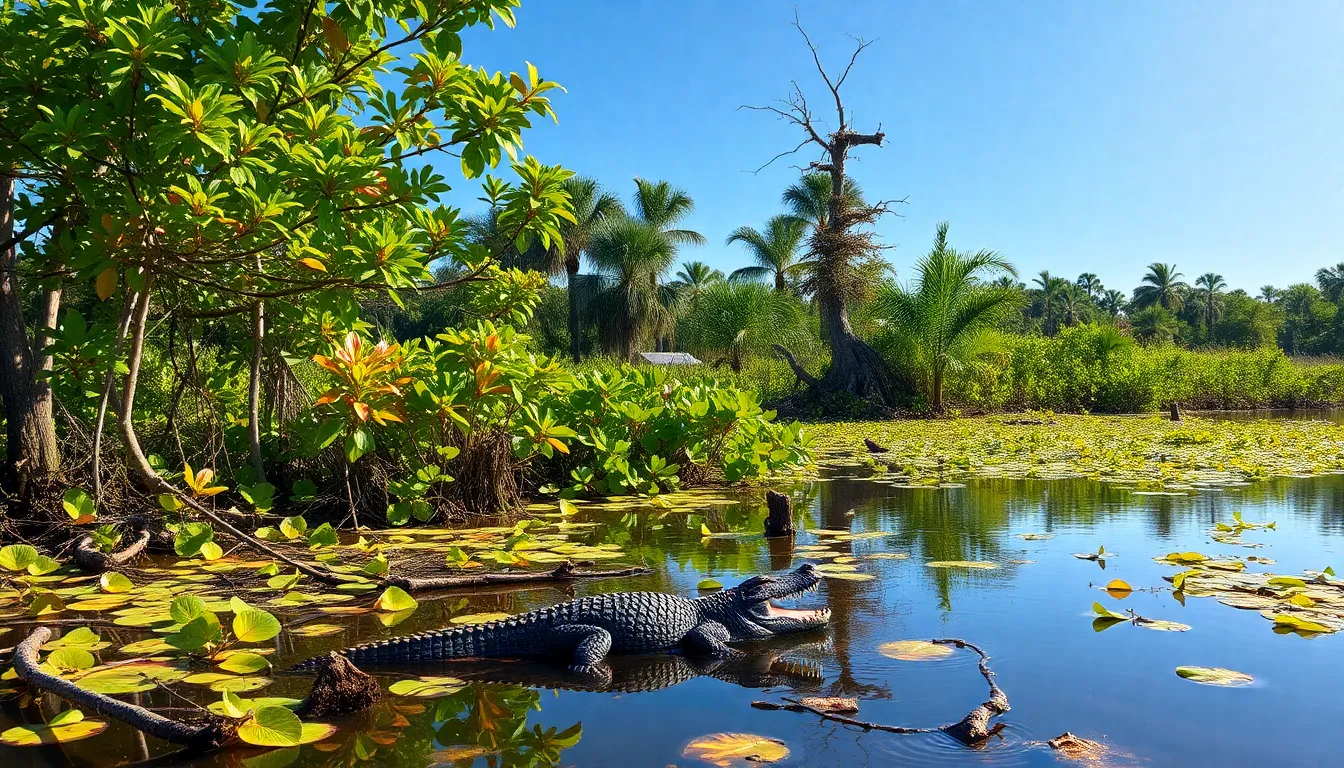Florida’s environmental landscape is as vibrant and diverse as its famous beaches and theme parks. Yet beneath the sunny surface, serious issues are bubbling up that demand attention. From the perils of rising sea levels to the quirky antics of alligators navigating urban life, the Sunshine State’s environmental news is a wild ride worth following.
Table of Contents
ToggleOverview of Florida Environmental News
Florida faces significant environmental challenges that demand attention. Rising sea levels threaten coastal communities, creating urgency for adaptation strategies. State initiatives focus on mitigating climate change impacts and protecting habitats. Wildlife interactions, especially between urban settings and alligators, highlight the need for public awareness and education.
Pollution from agricultural runoff continues to harm waterways, prompting regulatory changes aimed at improving water quality. Recent legislation seeks to enhance protection for the Everglades, a vital ecosystem with numerous species. Sustainable tourism initiatives draw attention to Florida’s natural beauty while promoting conservation efforts.
Community involvement plays a crucial role in addressing environmental issues. Local groups advocate for preservation and restoration projects aligned with scientific research. Monitoring programs track the health of fish populations and habitats, providing data for resource management decisions.
Recent reports indicate an uptick in manatee deaths linked to habitat loss and watercraft collisions. Efforts to protect these iconic marine mammals emphasize the importance of safeguarding their environments. Initiatives targeting invasive species aim to restore balance in ecosystems affected by human activity.
Floridians remain vigilant and proactive regarding environmental preservation and restoration. Continuous reporting on these issues assures ongoing public engagement. Awareness campaigns deliver valuable information, urging residents to participate in local conservation initiatives.
Key Issues Affecting Florida’s Environment

Florida’s environment faces several pressing issues that demand attention. Understanding these challenges is essential for effective advocacy and protection.
Climate Change Impacts
Rising sea levels threaten Florida’s coastal communities with increased flooding and erosion. Studies show that by 2050, many areas could experience substantial ecological shifts. Additionally, more frequent hurricanes and tropical storms create significant disruptions in both human and wildlife habitats. The region’s diverse ecosystems, such as mangroves and coral reefs, are particularly vulnerable to temperature fluctuations. Adaptation strategies include infrastructure improvements and habitat restoration projects aimed at enhancing resilience.
Water Pollution Challenges
Water pollution remains a critical concern across Florida’s waterways. Agricultural runoff introduces harmful chemicals, leading to algal blooms that suffocate aquatic life. Such pollution affects freshwater sources like the St. Johns River and Lake Okeechobee. Monitoring data reveals significant declines in water quality, impacting drinking supplies and recreation opportunities. Community efforts are in place to promote better agricultural practices and reduce stormwater runoff. Local organizations encourage public participation in cleanup initiatives, aiming to restore affected ecosystems.
Recent Environmental Legislation
Recent legislative measures in Florida focus on enhancing environmental protections and addressing climate change challenges. Significant policies aim to safeguard the state’s unique ecosystems and promote sustainable practices.
State Policies
Florida’s government has implemented various initiatives that address climate change and water conservation. Laws targeting nutrient pollution from agriculture have emerged, creating stricter regulations for fertilizers. Local governments must now adopt comprehensive water management plans to ensure sustainable usage. Additional funding allocated to Everglades restoration projects enhances efforts to revive and protect this critical habitat. Organizations collaborating with state agencies drive public awareness campaigns encouraging responsible environmental stewardship.
Federal Support and Initiatives
Federal initiatives provide substantial support for Florida’s environmental goals. The U.S. Environmental Protection Agency offers grants aimed at water quality improvements and pollution reduction strategies. Partnerships between state and federal agencies facilitate significant funding for habitat restoration, particularly along coastal areas impacted by erosion and rising seas. Additionally, federal investments promote research and development of climate-resilient technologies. Local communities benefit from these initiatives through training and resources focused on sustainable practices and disaster preparedness.
Success Stories and Conservation Efforts
Florida showcases numerous success stories in conservation, highlighting effective strategies and community initiatives. The Everglades Restoration Project stands as a prime example, aiming to restore 50 billion gallons of water flow annually into critical ecosystems. Partnerships between the state and federal governments secure funding for habitat restoration, positively impacting wildlife and vegetation.
Local organizations like the Florida Wildlife Federation work tirelessly to protect endangered species, such as the Florida panther. Their advocacy efforts often lead to increased awareness and support for wildlife habitats. Restoring coastal habitats, particularly mangroves, supports biodiversity while enhancing the resilience of shorelines against erosion.
In addition, recent legislative measures focus on enhancing environmental protections. Policies targeting nutrient pollution from agricultural practices help reduce harmful runoff. Stricter regulations for fertilizers reflect a commitment to improving water quality in waterways like the St. Johns River and Lake Okeechobee.
Community involvement proves vital in these initiatives. Public participation in cleanup events fosters a sense of ownership over local ecosystems. Volunteers contribute to preserving coastlines, ensuring habitats remain safe for various species. Educational programs instill values of conservation, engaging younger generations in environmental stewardship.
Monitoring efforts lead to adjustments in strategies based on scientific research, reinforcing adaptive management practices. Continuous assessment of ecosystems enables timely responses to environmental threats. Collaboration across sectors, including education, government, and non-profit organizations, fortifies conservation efforts.
Overall, Florida’s environmental landscape benefits from a combination of committed partnerships, legislative action, and community engagement. The state’s proactive approach contributes to successful conservation stories, exemplifying the collective effort toward preserving its rich biodiversity.
Upcoming Events and Initiatives
Numerous events focus on Florida’s environmental sustainability in the upcoming months. A coastal cleanup event scheduled for April 15, 2024, aims to remove debris from beaches and restore marine habitats. Residents can join this effort by registering through local eco-organizations dedicated to improving coastal health.
Workshops on sustainable agricultural practices are set for May 10, 2024. These sessions will educate farmers on reducing nutrient runoff and improving crop yield. Participants can learn strategies to minimize chemical use while maximizing productivity.
Another significant event, the Florida Environmental Conference, takes place from June 20-22, 2024. This gathering will feature experts discussing advancements in environmental policy, restoration projects, and climate adaptation strategies. Attendees can network with policymakers and community leaders dedicated to enhancing Florida’s ecosystems.
In addition, community tree planting initiatives are planned throughout September. Local groups will engage volunteers to plant native trees, promoting biodiversity while improving air quality. Trees will support wildlife habitats and mitigate urban heat effects.
Moreover, ongoing legislative efforts emphasize water quality improvements and habitat restoration. The Florida legislature will introduce new policies focused on aquatic ecosystem protection during the next session. Proposed laws will address agricultural runoff and enhance funding for critical habitat initiatives.
Collaborations between federal and state agencies continue to increase resources for restoration projects. Many organizations are also launching educational campaigns aimed at raising public awareness about climate change impacts. Active participation in these initiatives serves to strengthen local ecosystems and build resilient communities.
Florida’s environmental landscape is a complex tapestry of beauty and challenges. As the state grapples with the impacts of climate change and pollution, the importance of community involvement and legislative action cannot be overstated. Local organizations and government initiatives are making strides toward sustainability and conservation.
The upcoming events and workshops provide opportunities for Floridians to engage in meaningful actions that contribute to preserving the state’s unique ecosystems. With continued awareness and participation, there’s hope for a brighter environmental future in Florida. Ensuring the protection of its natural resources will require collective effort and commitment from all stakeholders.


